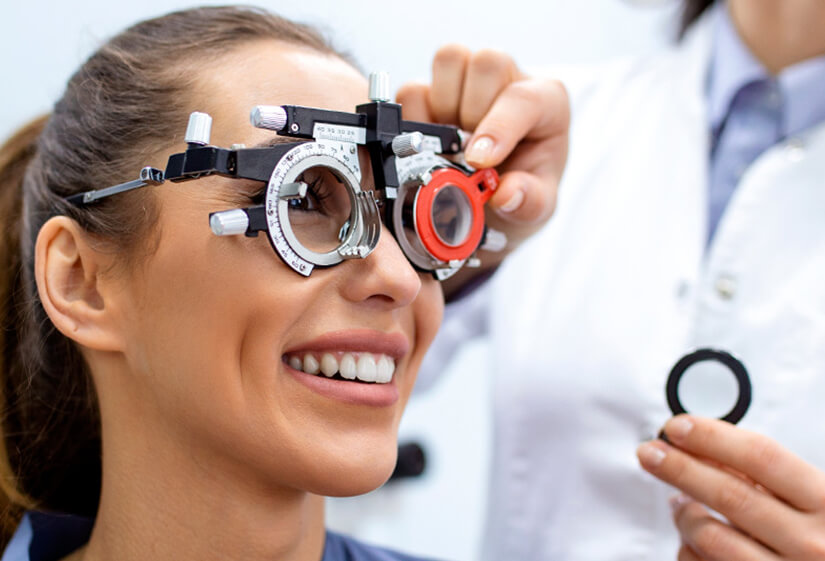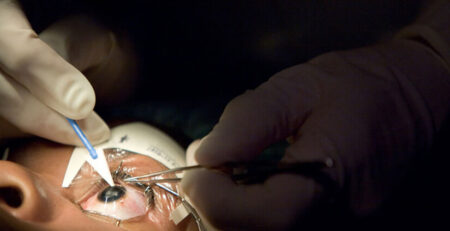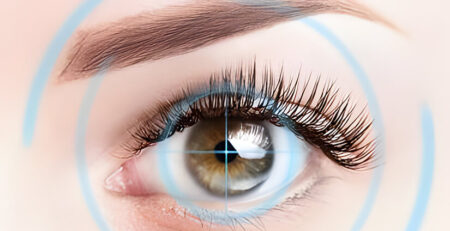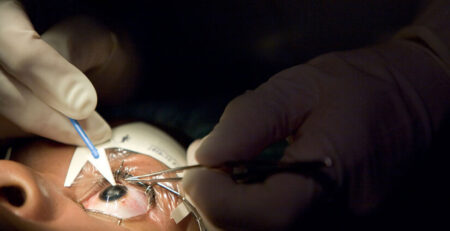What Are the Different Types of Refractive Errors and Their Correction?
Refractive errors are common vision problems that occur when the shape of the eye prevents light from focusing directly on the retina, leading to blurred vision. Several factors can cause refractive errors, including:
- If the eyeball is too long or too short, light will not focus correctly on the retina.
- If the cornea is not perfectly round, it can cause light to focus incorrectly.
- With age, the lens can become less flexible and may not be able to focus light.
Rarely, Other eye problems like cataract, corneal diseases and some retinal problems can also lead to refractive errors. There are four different types of refractiv errors, and treatment options may depend on the cause and severity of the condition. In some cases, refractive surgery is also recommended.
Types of Refractive Errors
There are four main types of refractive errors:
Nearsightedness (myopia): Nearsightedness is the most prevalent kind of refractive error where people may easily see close objects, but distant items look hazy. Because the eyeball is too long or the cornea is excessively curved, light rays focus in front of the retina rather than on it. This is corrected with minus power lenses.
Farsightedness (hyperopia): Farsighted people have the opposite problem of nearsighted people. They can see distant objects better, but nearby things appear blurry. This is due to a short eyeball or a flat cornea, which causes light rays to focus behind the retina. This is corrected with plus power lenses.
Astigmatism: Astigmatism develops when the cornea or lens is not in normal shape. One axis is steeper or flatter than the other. Light rays concentrate at multiple points in the eye, resulting in hazy vision at all distances. This starts early in life, as early as 3-4 years of age.
Presbyopia: Presbyopia is an age-related refractive error that makes it difficult to focus on close things. It is caused by the lens hardening and the weakening of the muscles that regulate the lens. This is corrected with plus power lenses is common after 40 years of age.
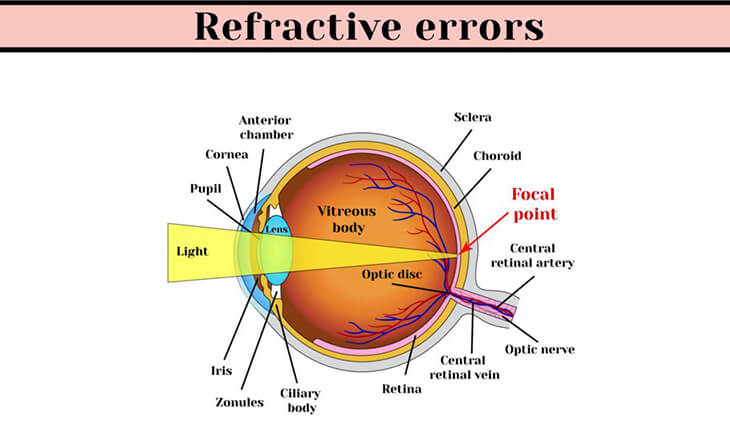
Correction of Refractive Errors
There are different treatment options, and the eye specialist in Delhi will prescribe the suitable option based on the severity of the condition.
Eyeglasses: Prescription eyeglasses are worn to address refractive errors that can impact your vision, particularly in situations like reading or driving, where these issues can cause difficulties.
Contact Lenses: Contact lenses are soft, thin, flexible lenses crafted based on your prescription, similar to eyeglasses. They are placed on the cornea or the outer surface of the eye.
Eyeglasses and contact lenses work by bending the light rays entering the eye to focus them correctly on the retina.
Refractive Error Surgery: Refractive surgery can be an effective solution that works by reshaping the cornea. Refractive error surgery is most commonly prescribed in older people when their glass power gets stable. There are several different types of refractive surgery available, including LASIK, PRK, and ICL surgery. The technique used to correct the refractive error and the severity of the condition impact the refractive surgery cost.
Conclusion!
Refractive errors are the most common eye condition that causes blurred vision. There are four types of refractive errors: nearsightedness, farsightedness, astigmatism and presbyopia. There are different approaches to treating these refractive errors, including refractive surgery. The best way to correct a refractive error is to see an eye specialist for a comprehensive eye exam. The eye doctor will determine the type and severity of the refractive error and recommend the best course of treatment.

